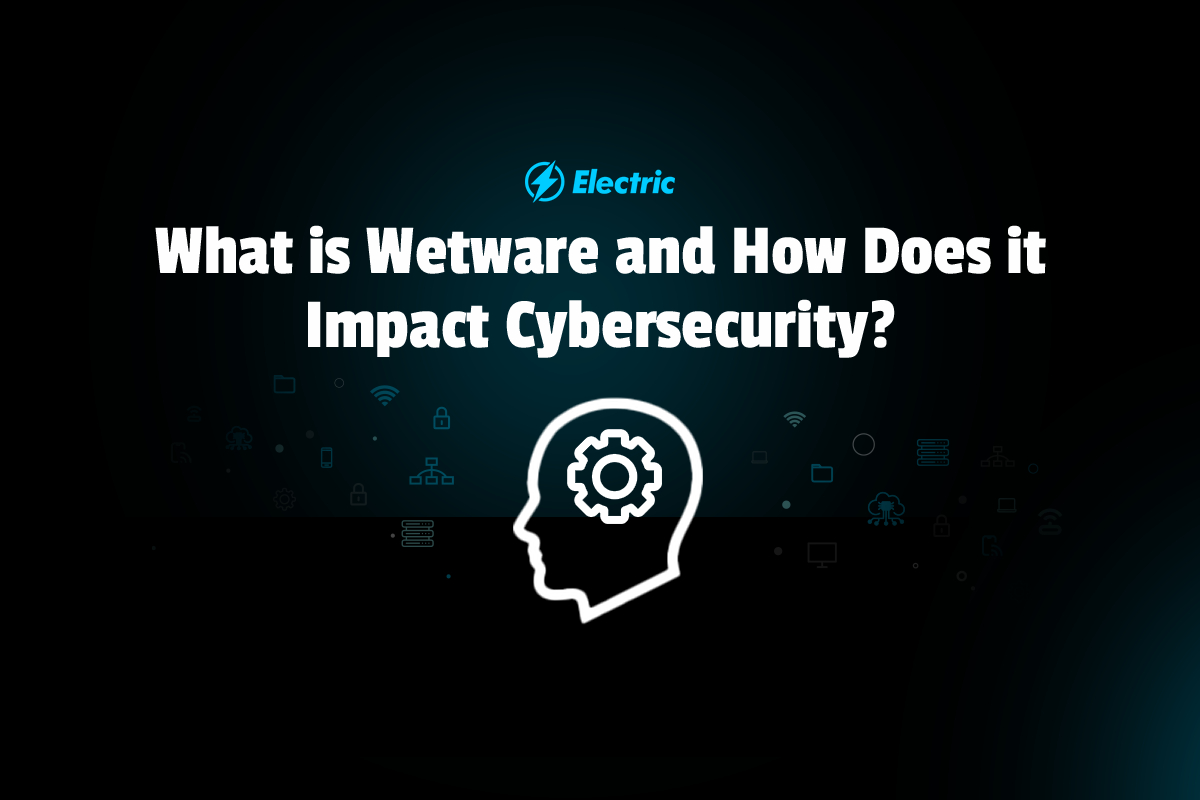
Most business leaders are familiar with the hardware and software elements of their IT infrastructure. Many, however, overlook the importance of “wetware” when it comes to their cybersecurity. An informal term used to describe the people who interact with IT, your wetware can leave your organization exposed to attack.
In fact, according to an IBM study, 95% of data breaches are caused by human error.
As cyber attacks become increasingly sophisticated, securing your wetware is critical for your small business’s security. Keep reading to learn more about the types of attacks that target these vulnerabilities, and how you can strengthen your organization’s wetware.
What is Wetware?
“Wetware” is coder slang for the human element of IT architecture, and the term typically refers to the employees of a business. The term itself originates from contrasting the human brain – the “wetware” – to actual hardware and software systems. Put simply, wetware is people.
Why Wetware is a Threat to Your Cybersecurity
With the growing number of successful cyber attacks against organizations of all sizes, ensuring robust cybersecurity has never been more important. In most cases, when business leaders think of cybersecurity, they think of things like encryption, access control, software updates, and so on. While all of these technology concepts are important, they invoke the notion that cybersecurity is the responsibility of IT security specialists alone.
In reality, the most vulnerable part of any organization’s cybersecurity is its employees. Threat actors usually target employees using social engineering – cyber attacks that are designed so that even the most informed users may make the mistake of clicking on links loaded with malicious software. As such, failing to involve employees, or wetware, in your security programs can leave your organization susceptible to attacks.
Even the best cybersecurity strategies and policies are rendered useless if humans end up bypassing them. To avoid wetware security problems, organizations should adopt a robust cybersecurity approach that incorporates employee cybersecurity training.
6 Ways Businesses Can Strengthen Wetware
Consider the following best practices to strengthen your organization’s wetware defenses:
1. Provide Cybersecurity Training for Employees
Cybersecurity training for employees is key to strengthening your wetware. In the past, cybersecurity training was typically reserved for IT security specialists. Today, all employees need to be properly educated on security best practices and how to maintain good cybersecurity hygiene. As such, you should implement frequent security training programs to empower your employees.
Your cybersecurity training should be engaging and interactive to ensure that your employees retain critical information. Additionally, training should be ongoing to avoid employees becoming complacent. Regularly scheduled training sessions help ensure employees are aware of the latest cybersecurity threats and best practices.
2. Cybersecurity Training Should Include All Departments
Don’t sideline anyone from your cybersecurity training program just because they are junior level or don’t handle technical issues – the training should include everyone from lower-level employees to executive managers. Remember that threat actors can target anyone in your organization, so company-wide awareness is critical.
3. Establish Multi-Factor Authentication and Strong Passwords
Strong passwords can prevent threat actors from accessing confidential business information. Implement requirements for employee passwords to contain a mixture of letters and symbols, and mandate regular password changes. A password manager is a useful tool for protecting your wetware. You should also deploy multi-factor authentication to add an additional layer of protection in case a threat actor compromises an employee’s credentials.
4. Incentivize Good Security Hygiene
You can encourage your employees not only through cybersecurity training, but also by offering incentives for them to practice what they learn. The incentive need not be huge. It could be something as simple as public recognition for employees who spot potential breaches and report them to through the appropriate channels.
5. Provide Your Wetware With Cybersecurity Tools
Providing cybersecurity training alone isn’t enough to protect your business from becoming a victim of attack. Security firewalls, antivirus, data backups, and other cybersecurity software will help prevent unauthorized users from gaining access to your network. By ensuring your security tools are always up to date, you can help protect your wetware from exposure to attack.
6. Monitor Employees’ Progress
A cyber attack can happen abruptly. As such, your employees should always be alert. To test your employees’ cybersecurity awareness, consider occasionally sending fake phishing emails to gauge your employees’ response. Chances are that some may still have challenges responding to potential threats. This measure shouldn’t be used as an opportunity to punish employee error. Rather, it allows you to learn about gaps in your wetware so you can adjust your cybersecurity training accordingly.
Make Wetware Part of your Cybersecurity
While employees play a big part in the success of your business, they can also unintentionally leave you vulnerable to cybersecurity attacks. As a business leader, you have a responsibility to equip your employees with the right skills and tools to protect your most valuable assets. Contact Electric for the support you need to strengthen your wetware and bolster your cybersecurity.



